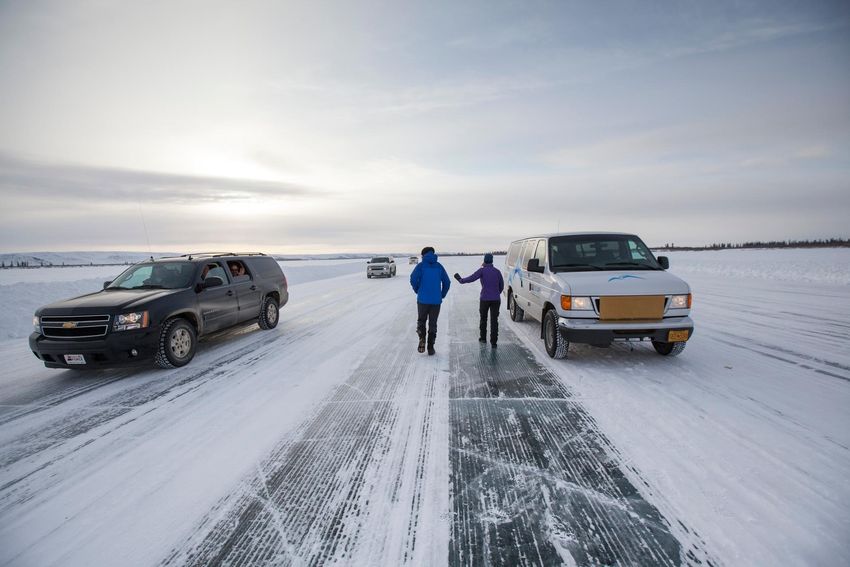Introduction
When winter arrives in the Arctic and subarctic regions, frozen lakes and rivers transform into temporary highways, allowing trucks and heavy vehicles to traverse areas otherwise inaccessible during warmer months. But how do these ice roads work? What prevents them from cracking under extreme loads? Let’s dive into the science and engineering behind these fascinating frozen highways.
1. What Are Ice Roads?
Ice roads, also called winter roads, are seasonal pathways made of frozen lakes, rivers, or compacted snow that provide essential transportation routes in remote areas. These roads are commonly used in Canada, Alaska, Russia, and Scandinavia, where they connect isolated communities and facilitate mining and logging operations.
Why Are Ice Roads Needed?
- Many remote areas lack permanent road infrastructure.
- Transportation by ice roads is cheaper than flying supplies via aircraft.
- Heavy machinery, fuel, and food can be transported during the winter months.
2. The Science of Ice Strength
Ice roads must be engineered with precision because their load-bearing capacity depends on ice thickness. Engineers follow a strict formula to determine whether a frozen surface is safe for vehicles.
How Thick Should Ice Be? 🚛❄️
- 10 cm (4 inches): Safe for walking
- 15 cm (6 inches): Can support a snowmobile or small car
- 30 cm (12 inches): Safe for a light truck (2 tons)
- 50 cm (20 inches): Supports large trucks (10+ tons)
- Over 100 cm (40 inches): Suitable for massive loads
💡 Fun Fact: Engineers drill holes and use sonar devices to measure ice thickness before allowing traffic on ice roads.
3. How Ice Roads Are Built
Building an ice road isn’t just about waiting for water to freeze. It requires careful planning and maintenance.
Step-by-Step Ice Road Construction:
-
Site Selection & Preparation
- Identify stable, slow-moving water bodies or frozen tundra.
- Avoid areas with currents, as moving water weakens ice.
-
Strengthening the Ice
- Flooding technique: Water is sprayed on the ice surface to create additional layers.
- Snow removal: Snow acts as an insulator, so clearing it helps ice thicken faster.
-
Marking the Route
- Engineers place poles or markers to indicate safe travel paths.
- Warning signs mark thin ice or weak spots.
-
Testing the Road
- Ground-penetrating radar (GPR) is used to check for cracks.
- Pilot vehicles drive test routes before opening to public use.
-
Traffic Regulation
- Vehicles must travel at specific speeds to prevent ice cracking.
- Spacing between trucks is controlled to distribute weight evenly.
4. The Biggest Threats to Ice Roads
Despite careful engineering, ice roads face serious risks:
1️⃣ Temperature Fluctuations
- Warm weather weakens ice and creates dangerous thin spots.
- Sudden temperature drops can cause cracks and fractures.
2️⃣ Ice Fatigue & Overloading
- Repeated use weakens ice layers.
- Trucks must be spaced apart to reduce stress.
3️⃣ Water Currents & Weak Spots
- Moving water under ice prevents uniform freezing.
- Engineers avoid constructing roads over unstable areas.
5. Famous Ice Roads Around the World
🚛 The World’s Most Extreme Ice Roads:
🧊 Tibbitt to Contwoyto Winter Road (Canada) – One of the longest ice roads, spanning 600 km (370 miles).
🧊 Dalton Highway Ice Roads (Alaska) – A dangerous but crucial supply route for Arctic oil fields.
🧊 Baikal Ice Road (Russia) – A 25 km frozen highway over Lake Baikal, the world’s deepest freshwater lake.
🧊 Kuskokwim River Ice Road (Alaska) – A lifeline for remote villages in winter.
6. The Future of Ice Roads: Are They Disappearing?
With climate change and rising global temperatures, ice roads are becoming less reliable. The ice forms later in winter and melts earlier, reducing transportation periods. As a result, engineers are exploring alternatives like:
🚧 Permanent gravel roads in Arctic regions
🚧 Floating bridges over lakes and rivers
🚧 Improved ice road reinforcement techniques
Conclusion: The Beauty and Challenge of Ice Roads
Ice roads are one of the most unique engineering marvels on the planet, allowing people and goods to travel across frozen landscapes safely. However, their future remains uncertain as warmer winters shorten their lifespan. For now, these icy highways remain an essential part of life in remote regions.
🚛❄️ Next time you see an ice road, remember the careful engineering that goes into making it safe for travel!


